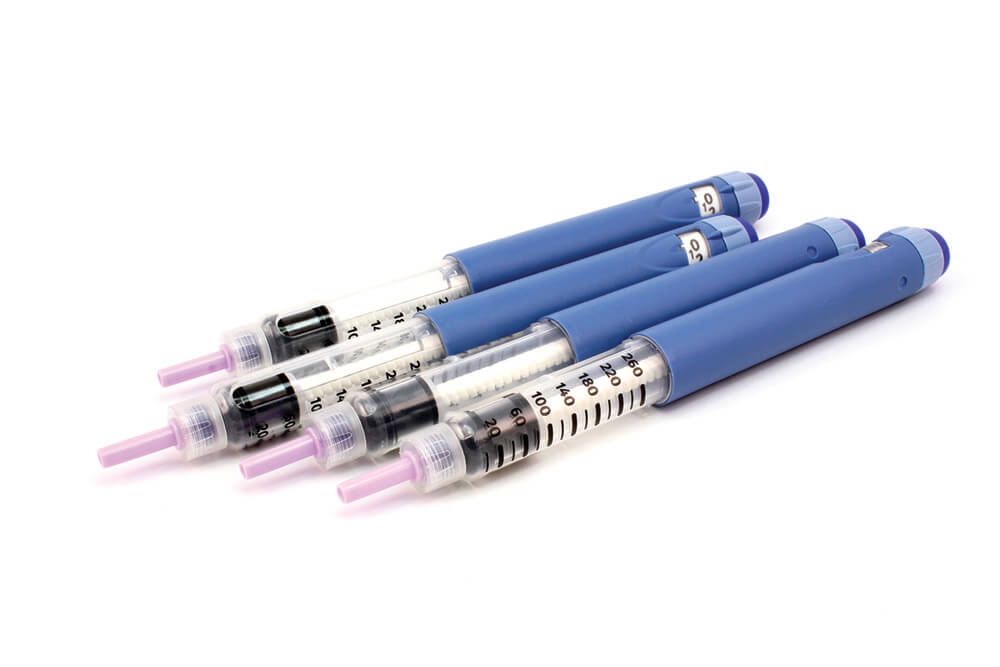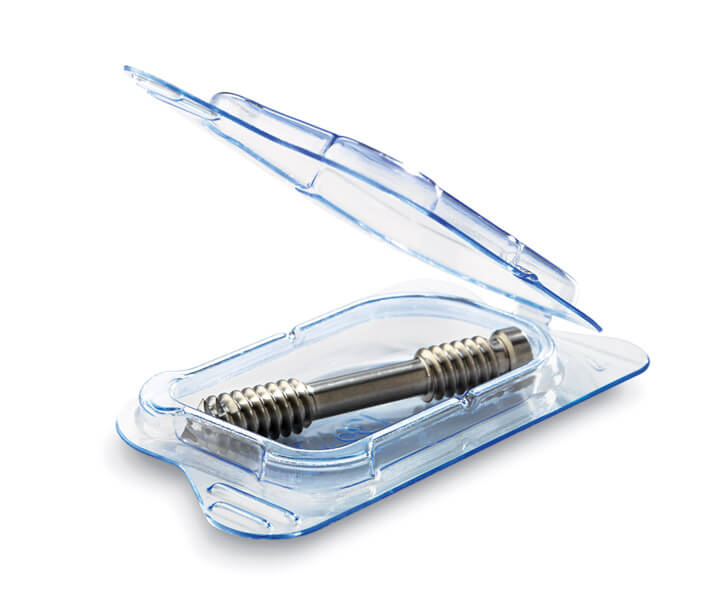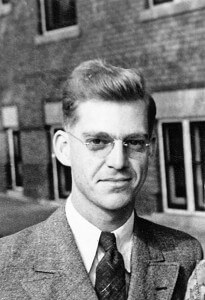Plastics Pioneers
A trailblazing course and its modest professor gave life to entrepreneurial spirit and a thriving Wisconsin industry.
It’s an unforgettable scene in Dustin Hoffman’s 1967 breakout movie The Graduate, when party guest Mr. McGuire pulls Hoffman’s character, Benjamin Braddock, aside to advise the younger man about the future.
“I just want to say one word to you. … Just one word. … Are you listening?” he says. When Braddock confirms he’s all ears, McGuire drops the magic word: Plastics.
That boost from Hollywood was an accurate prediction that shone a spotlight on the industry. But Tom Mohs ’62, founder of the Madison plastic manufacturer Placon, says he truly owes nothing to the film. “I was already buying my second thermoforming machine when the movie came out,” says Mohs, referring to the equipment that softens and forms plastic. “No, I owe it to Ron Daggett.”
• • •
Ronald Daggett ’38, MS’39 brought plastics into the classroom, teaching the UW’s — in fact, the world’s — first course on the subject. After earning his two mechanical engineering degrees, Daggett engineered plastic for RCA Corporation during World War II. When he returned to Madison in 1946 and joined the university’s faculty, “There was this new material, but nobody knew anything about it,” says Tim Osswald, a professor of mechanical engineering who teaches the courses that Daggett originated. “So [Daggett] thought, ‘I went through this learning process at RCA; there’s got to be a course taught.’ He wanted the course to focus on manufacturing, on strength and creep — all the strange things about plastic that people did not understand at the time. There was not even a textbook.”
The elective course that Daggett devised has been offered every semester for the past six decades. In 1990, the course was split into two areas of emphasis — plastics design and plastics processes — and they are the most popular electives among mechanical engineering students.
“[Daggett’s] course was perfect for what I was looking for,” Mohs recalls. “It was not highly technical. It was a survey that talked about the fundamentals of various plastics-processing equipment and various kinds of plastics — the differences among polyethylene, polypropylene, ABS, [poly]styrene.” (See sidebar, at bottom.)
When Daggett first started teaching, Osswald says, plastics was a trial-and-error industry. Plastic parts were crude, ugly, and fragile. Today, however, plastic can be tough, resilient, and attractive.
Thanks to new formulas and processes, plastic has emerged from the shadows, encroaching on fabric, wood, and metal and becoming the material of choice. Many things — retail bags, computer keyboards, car dashboards, heart valves, and more — could not realistically be made from anything else.
But Osswald notes that much of the credit for that stream of innovations in plastic belongs to the scientific approach begun by Daggett and his colleague, UW chemist John Ferry.
“Ferry was the father of polymer physics,” Osswald says. “So, two hundred meters apart from each other [on campus], we had the moldmaker in mechanical engineering and this polymer physicist in chemistry who understood the molecular structure of the material. It wasn’t until those two came together after 1955 that people in the industry could push their material to the limit.”
The plastics industry has continued to expand and innovate, Osswald says, noting that today, companies make products that did not exist even a decade ago. Although a primitive industry existed before Daggett started teaching, he was present for the plastics revolution. “He got it all going,” Osswald says. “Wisconsin was the birthplace. The pioneers in understanding plastics were here, and that’s why it’s no coincidence that such a small state has such a huge plastics industry.”
• • •
These days, Wisconsin plastics are thriving. By 2011, the field employed an estimated 35,000, making it the eighth-largest plastics employer in the nation, according to the Plastics Industry Trade Association. And a number of these flourishing companies owe their roots to Daggett. When students or former students shared ideas for new products, Daggett was the first to tell them to start their own companies.
When Mohs first came back to Madison in the 1960s with an idea for the blister pack — today used to hold a vast array of items ranging from allergy pills to batteries — he turned to his former engineering professor. “Ron was the first person I contacted,” Mohs recalls. “I decided to do some design work, and Ron offered the use of equipment and machine tools in his basement. He was very kind and helpful, [and he] continued to teach me what I needed to know.”
That idea grew into Placon, a company that today employs six hundred people based at a main plant in Fitchburg and additional manufacturing facilities in Indiana and Massachusetts. The firm makes packaging for the food, retail, and medical industries.
Another of Daggett’s successful students was Robert Cervenka ’58, whose wife, Debra, says that her husband landed his first job out of college at Modern Plastics directly because of Daggett’s course. In 1964, Cervenka founded his own company, now called Phillips-Medisize, which focuses on pharmaceutical packaging and sophisticated medical devices such as insulin pumps and surgical instruments. It employs more than 3,100 people at six locations in Wisconsin, and in California, Europe, Mexico, and China.
In 2010, to recognize UW–Madison’s role in their success, the Cervenkas donated $1.5 million to the university to fund advanced equipment in the undergraduate engineering teaching labs. “We both feel very connected to what it takes to run a successful company technologically,” Debra Cervenka says. “Madison is one of the foremost schools of engineering in the country, and they’re doing unbelievably good work on basically a shoestring.”
Daggett himself was also drawn into entrepreneurship. After years of designing intricate molds and parts for other manufacturers in his basement, he decided that he needed to move to gain credibility with potential customers. In 1963, he started Engineering Industries in Verona, and Rayovac became a major customer.
Engineering Industries president Dean VandeBerg ’78, who began working at the company as an intern in the summer of 1978 and never left, recalls that Daggett specialized in the hard jobs. “Ron would not take just anything that came along,” he says. “He liked to work on parts that required a little more engineering and development work. He loved helping the customer design. I would watch him work with customers, getting their thoughts, and he would be drawing the part as they talked.”
That emphasis on solving hard challenges “remains a strong suit and laid the foundation for who we are as a company,” VandeBerg says. Engineering Industries employs about eighty people, including four mechanical engineers educated at UW–Madison.
“I learned an awful lot from [Daggett],” VandeBerg says. “He was my mentor — that’s not debatable. He was an even-keeled kind of guy, not a gregarious backslapper. … From looking [at him], you would not realize all that was going on there.”
How might Daggett, who passed away in 2004, react if credited with the critical role he played in his former students’ success? “If someone complimented him,” VandeBerg says, “He would just smile and say, ‘That’s very kind of you.’ ”
David J. Tenenbaum MA’86 covers research for University Communications.
Published in the Summer 2015 issue












Comments
No comments posted yet.